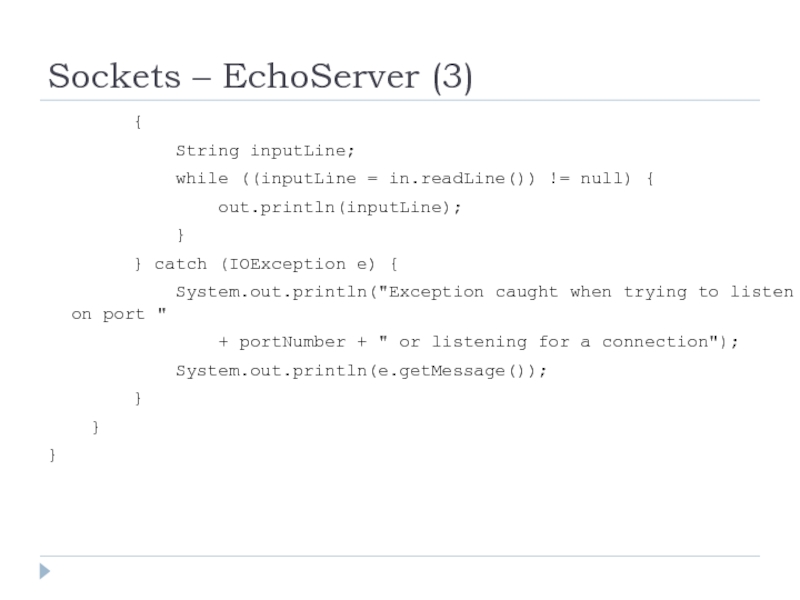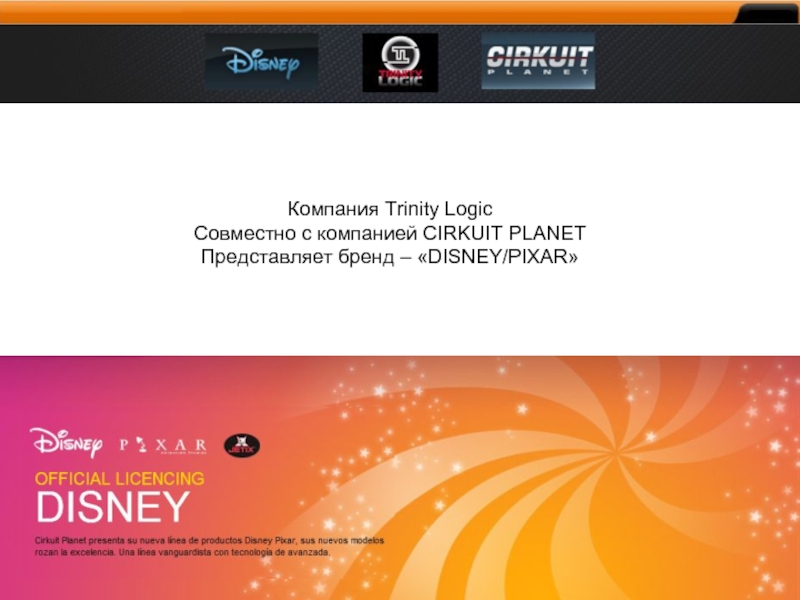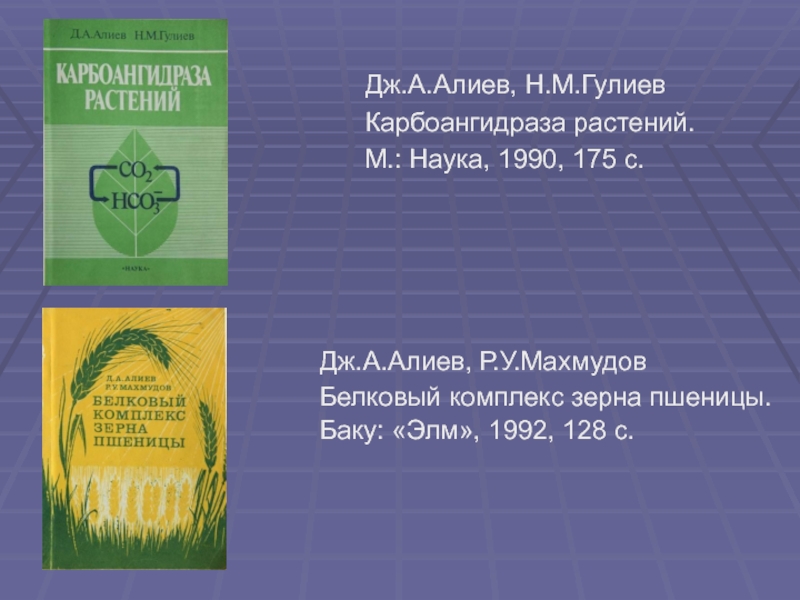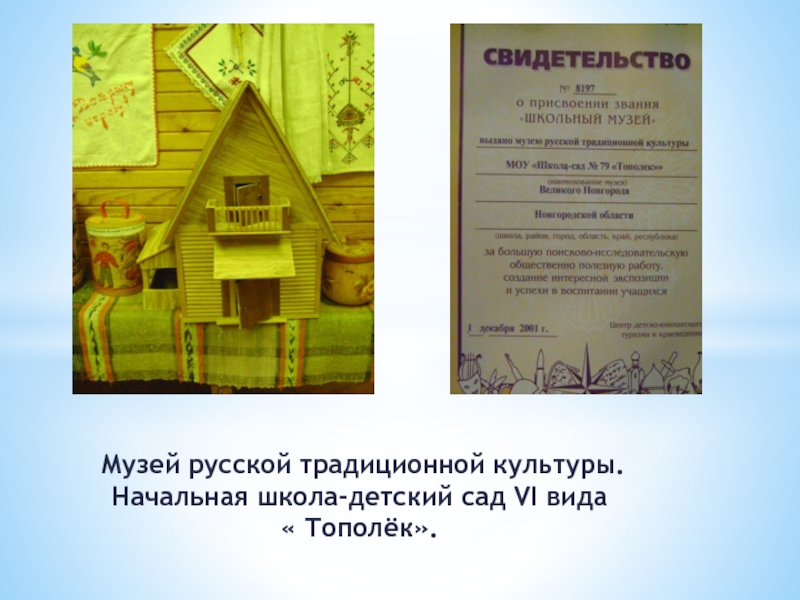- Главная
- Разное
- Дизайн
- Бизнес и предпринимательство
- Аналитика
- Образование
- Развлечения
- Красота и здоровье
- Финансы
- Государство
- Путешествия
- Спорт
- Недвижимость
- Армия
- Графика
- Культурология
- Еда и кулинария
- Лингвистика
- Английский язык
- Астрономия
- Алгебра
- Биология
- География
- Детские презентации
- Информатика
- История
- Литература
- Маркетинг
- Математика
- Медицина
- Менеджмент
- Музыка
- МХК
- Немецкий язык
- ОБЖ
- Обществознание
- Окружающий мир
- Педагогика
- Русский язык
- Технология
- Физика
- Философия
- Химия
- Шаблоны, картинки для презентаций
- Экология
- Экономика
- Юриспруденция
SSD8: Networks and Distributed Computing презентация
Содержание
- 1. SSD8: Networks and Distributed Computing
- 2. My Info Madina Tulegenovna Ipalakova Мадина
- 3. Description The subject focuses on the principles
- 4. Topics Networking protocols Technology Multimedia networking
- 5. Required Texts James F. Kurose and Keith
- 6. Unit 1. Core Network Protocols Lecture 1. Introduction and Revision
- 7. Basics of Communication All methods of communication
- 8. Communicating Devices End devices (or hosts)
- 9. Intermediary Devices Manage data as it flows
- 10. Media Provides the channel over which messages
- 11. LANs, WANs LAN – Local Area Network
- 12. Communicating the Messages Segmentation The data stream
- 13. Uses of Computer Networks People-computer interaction (Web)
- 14. Web Browsers and Servers Client-server application interaction
- 15. Protocol A protocol is a set of
- 16. Layered Models
- 17. Layered Models Reference (OSI) model Provides
- 18. Protocol Data Units and Encapsulation Header Header Data Header Trailer 0010100111011001010000011111010100010101 Segmentation and Encapsulation
- 19. Protocol Data Units and Decapsulation Header Header Header Trailer Data 0010100111011001010000011111010100010101 Decapsulation and Reassembly
- 20. Protocol Data Units and Encapsulation Header Header
- 21. HTTP HyperText Transfer Protocol Application-level protocol between
- 22. Structure of HTTP Transactions HTTP uses the
- 23. Format of an HTTP Message Header1: value1 Header2: value2 Header3: value3
- 24. Initial Line for Request A request line
- 25. Initial Line for Response (Status Line) A
- 26. Header Lines Provide information about the request
- 27. The Message Body In a response, the
- 28. Sample HTTP Exchange (Request) The task
- 29. Sample HTTP Exchange (Response) HTTP/1.0 200 OK
- 30. Socket-Level Programming Two styles of communication First,
- 31. Sockets A socket is one endpoint of a two-way
- 32. Sockets An endpoint is a combination of
- 33. Sockets – EchoClient Class (1) import java.io.*;
- 34. Sockets – EchoClient Class (2) try (
- 35. Sockets – EchoClient Class (3)
- 36. Sockets – EchoServer (1) import java.net.*; import
- 37. Sockets – EchoServer (2) try ( ServerSocket
- 38. Sockets – EchoServer (3)
Слайд 2My Info
Madina Tulegenovna Ipalakova
Мадина Тулегеновна Ипалакова
CE&T Department, of. 409
m.ipalakova@iitu.kz
Слайд 3Description
The subject focuses on the principles and practices of network-based computing
Network
technology in support of data and multimedia communication
Application-oriented protocol and approaches to distributed object-oriented programming using Java
Application-oriented protocol and approaches to distributed object-oriented programming using Java
Слайд 4Topics
Networking protocols
Technology
Multimedia networking
Client/server design including thick and thin clients
CORBA and
related tools
WWW implementation issue
Electronic mail
Security issues
Privacy issues
WWW implementation issue
Electronic mail
Security issues
Privacy issues
Слайд 5Required Texts
James F. Kurose and Keith W. Ross. Computer Networking: A Top-Down
Approach Featuring the Internet. Second edition, Boston: Addison Wesley Longman, Inc., 2003
OR
James F. Kurose and Keith W. Ross. Computer Networking: A Top-Down Approach Featuring the Internet. Third edition, Boston: Addison Wesley, 2004
David Reilly and Michael Reilly. Java(TM) Network Programming and Distributed Computing . First edition, Addison Wesley, 2002
OR
James F. Kurose and Keith W. Ross. Computer Networking: A Top-Down Approach Featuring the Internet. Third edition, Boston: Addison Wesley, 2004
David Reilly and Michael Reilly. Java(TM) Network Programming and Distributed Computing . First edition, Addison Wesley, 2002
Слайд 7Basics of Communication
All methods of communication (between devices as well) have
the following things in common
There is source of a message or a sender
There is a destination of the message or a receiver
There is a channel that consists of the media that provides the pathway for the message
A computer network is an infrastructure that allows computing devices to communicate with each other
There is source of a message or a sender
There is a destination of the message or a receiver
There is a channel that consists of the media that provides the pathway for the message
A computer network is an infrastructure that allows computing devices to communicate with each other
Слайд 8Communicating Devices
End devices (or hosts)
Any devices that allows us to
interface with the network
Are either the source or destination of a message
Work stations, servers, laptops, printers, security cameras, etc
Can be a client or server, or both, depending on the software installed
Intermediary devices
Any device that provides connectivity to the network, connectivity to other network, or links between network segments
Routers, switches, hubs, wireless access points, security devices
Are either the source or destination of a message
Work stations, servers, laptops, printers, security cameras, etc
Can be a client or server, or both, depending on the software installed
Intermediary devices
Any device that provides connectivity to the network, connectivity to other network, or links between network segments
Routers, switches, hubs, wireless access points, security devices
Слайд 9Intermediary Devices
Manage data as it flows through the network
Find the best
path through the network
Regenerate and retransmit data signals
Maintain information about what pathways exist through the network and internetwork
Notify other devices of errors and communication failures
Direct data along alternate pathways when there is a link failure
Permit or deny the flow of data, based on security settings
Regenerate and retransmit data signals
Maintain information about what pathways exist through the network and internetwork
Notify other devices of errors and communication failures
Direct data along alternate pathways when there is a link failure
Permit or deny the flow of data, based on security settings
Слайд 10Media
Provides the channel over which messages travel from source to destination
The
types are
Copper – metallic wires within cables
Fiber optics – glass or plastic fibers
Wireless – wireless transmission
Signal encoding
Copper – electrical impulses with specific patterns
Fiber optics – pulses of light in the infrared or visible ranges
Wireless – patterns of electromagnetic waves
Copper – metallic wires within cables
Fiber optics – glass or plastic fibers
Wireless – wireless transmission
Signal encoding
Copper – electrical impulses with specific patterns
Fiber optics – pulses of light in the infrared or visible ranges
Wireless – patterns of electromagnetic waves
Слайд 11LANs, WANs
LAN – Local Area Network – an individual network usually
spans a single geographical area, providing services and applications to people within a common organizational structure, such as a single business, campus or region
WAN – Wide Area Network – networks that connect LANs in geographically separated locations. Usually implemented with leased connections through a telecommunications service provider (TSP) network
Internet Service Providers (ISPs) connect their customers to the Internet through their network infrastructure
WAN – Wide Area Network – networks that connect LANs in geographically separated locations. Usually implemented with leased connections through a telecommunications service provider (TSP) network
Internet Service Providers (ISPs) connect their customers to the Internet through their network infrastructure
Слайд 12Communicating the Messages
Segmentation
The data stream is divided into smaller, more manageable
segments
Benefits
Multiplexing – different transmissions can be interleaved on the network
Reliability
Separate pieces of each message can travel across different paths to destination
If a part of the message fails to make it to the destination, only the missing part need to be retransmitted
Benefits
Multiplexing – different transmissions can be interleaved on the network
Reliability
Separate pieces of each message can travel across different paths to destination
If a part of the message fails to make it to the destination, only the missing part need to be retransmitted
Слайд 13Uses of Computer Networks
People-computer interaction (Web)
People-people interaction (Email, video conferencing)
Computer-computer interaction
Слайд 14Web Browsers and Servers
Client-server application interaction
Web browser and server are able
to “talk” to each other
Web browser and server understand each other
This is achieved by means of a protocol
Web browser and server understand each other
This is achieved by means of a protocol
Слайд 15Protocol
A protocol is a set of rules that allows network applications
to talk to each other
Defines the message format
A typical message:
Header
Body
Defines the behavior of the sender and the receiver
Defines the rules for establishing and terminating communication sessions
Protocol suite – a group of inter-related protocols that are necessary to perform a communication function
Defines the message format
A typical message:
Header
Body
Defines the behavior of the sender and the receiver
Defines the rules for establishing and terminating communication sessions
Protocol suite – a group of inter-related protocols that are necessary to perform a communication function
Слайд 17Layered Models
Reference (OSI) model
Provides a common reference for maintaining consistency
within all types of network protocols and services
Not intended to be an implementation specification
Help to understand the fundamental functions and process
Protocol (TCP/IP) model
Closely matches the structure of a particular protocol suite
The set of related protocols in a suite typically represents all the functionality required to interface the human network with the data network
The TCP/IP model is a protocol model because it describes the functions that occur at each layer of protocols only within the TCP/IP suite
Not intended to be an implementation specification
Help to understand the fundamental functions and process
Protocol (TCP/IP) model
Closely matches the structure of a particular protocol suite
The set of related protocols in a suite typically represents all the functionality required to interface the human network with the data network
The TCP/IP model is a protocol model because it describes the functions that occur at each layer of protocols only within the TCP/IP suite
Слайд 18Protocol Data Units and Encapsulation
Header
Header
Data
Header
Trailer
0010100111011001010000011111010100010101
Segmentation and Encapsulation
Слайд 19Protocol Data Units and Decapsulation
Header
Header
Header
Trailer
Data
0010100111011001010000011111010100010101
Decapsulation and Reassembly
Слайд 20Protocol Data Units and Encapsulation
Header
Header
Header
Trailer
Email Message
Data
Data
Data
Data
Segment
Packet
Frame
Protocol Data Units
Слайд 21HTTP
HyperText Transfer Protocol
Application-level protocol between browsers and servers to deliver resources
on the World Wide Web
A browser is an HTTP client
A Web server is an HTTP server (Web server)
The standard (and default) port for HTTP servers is 80
A resource is some chunk of information that can be identified by a URL (file, dynamically-generated query result, the output of a CGI script, a document that is available in several languages, etc)
A browser is an HTTP client
A Web server is an HTTP server (Web server)
The standard (and default) port for HTTP servers is 80
A resource is some chunk of information that can be identified by a URL (file, dynamically-generated query result, the output of a CGI script, a document that is available in several languages, etc)
Слайд 22Structure of HTTP Transactions
HTTP uses the client-server model: An HTTP client
sends a request message to an HTTP server; the server returns a response message with the resource
Both kinds of messages consists of:
an initial line
zero or more header lines
a blank line (i.e. a CRLF by itself)
an optional message body (resource)
Both kinds of messages consists of:
an initial line
zero or more header lines
a blank line (i.e. a CRLF by itself)
an optional message body (resource)
Слайд 24Initial Line for Request
A request line has three parts, separated by
spaces:
a method name
the local path of the requested resource
the version of HTTP being used
A typical request line is
GET /path/to/file/index.html HTTP/1.0
a method name
the local path of the requested resource
the version of HTTP being used
A typical request line is
GET /path/to/file/index.html HTTP/1.0
Слайд 25Initial Line for Response (Status Line)
A response line has three parts
separated by spaces:
the HTTP version
a response status code that gives the result of the request
an English reason phrase describing the status code. Typical status lines are:
Typical status lines are
HTTP/1.0 200 OK or HTTP/1.0 404 Not Found
The status code is a three-digit integer:
1xx indicates an informational message only
2xx indicates success of some kind
3xx redirects the client to another URL
4xx indicates an error on the client's part
5xx indicates an error on the server's part
the HTTP version
a response status code that gives the result of the request
an English reason phrase describing the status code. Typical status lines are:
Typical status lines are
HTTP/1.0 200 OK or HTTP/1.0 404 Not Found
The status code is a three-digit integer:
1xx indicates an informational message only
2xx indicates success of some kind
3xx redirects the client to another URL
4xx indicates an error on the client's part
5xx indicates an error on the server's part
Слайд 26Header Lines
Provide information about the request or response, or about the
object sent in the message body
The format is "Header-Name: value", ending with CRLF
The header name is not case-sensitive (the value may be)
Any number of spaces or tabs may be between the ":" and the value
Header lines beginning with space or tab are actually part of the previous header line, folded into multiple lines for easy reading
Thus, the following two headers are equivalent:
Header1: some-long-value-1a, some-long-value-1b
HEADER1: some-long-value-1a,
some-long-value-1b
The format is "Header-Name: value", ending with CRLF
The header name is not case-sensitive (the value may be)
Any number of spaces or tabs may be between the ":" and the value
Header lines beginning with space or tab are actually part of the previous header line, folded into multiple lines for easy reading
Thus, the following two headers are equivalent:
Header1: some-long-value-1a, some-long-value-1b
HEADER1: some-long-value-1a,
some-long-value-1b
Слайд 27The Message Body
In a response, the message body contains the requested
by the client resource or perhaps explanatory text if there's an error
In a request, this is where user-entered data or uploaded files are sent to the server
If an HTTP message includes a body, there are usually header lines in the message that describe the body.
The Content-Type: header gives the MIME-type of the data in the body, such as text/html or image/gif
The Content-Length: header gives the number of bytes in the body
In a request, this is where user-entered data or uploaded files are sent to the server
If an HTTP message includes a body, there are usually header lines in the message that describe the body.
The Content-Type: header gives the MIME-type of the data in the body, such as text/html or image/gif
The Content-Length: header gives the number of bytes in the body
Слайд 28Sample HTTP Exchange (Request)
The task is to retrieve the file
at the URL
http://www.somehost.com/path/file.html
First open a socket to the host www.somehost.com, port 80
Then, send something like the following through the socket:
GET /path/file.html HTTP/1.0
From: someuser@jmarshall.com
User-Agent: HTTPTool/1.0
[blank line here]
http://www.somehost.com/path/file.html
First open a socket to the host www.somehost.com, port 80
Then, send something like the following through the socket:
GET /path/file.html HTTP/1.0
From: someuser@jmarshall.com
User-Agent: HTTPTool/1.0
[blank line here]
Слайд 29Sample HTTP Exchange (Response)
HTTP/1.0 200 OK
Date: Mon, 29 Sep 2016 01:01:01
GMT
Content-Type: text/html
Content-Length: 1354
(more file contents)
.
.
.
After sending the response, the server closes the socket
Content-Type: text/html
Content-Length: 1354
Happy New Millennium!
(more file contents)
.
.
.
After sending the response, the server closes the socket
Слайд 30Socket-Level Programming
Two styles of communication
First, by establishing a reliable, two-way, byte
stream channel. Any data sent by a host will be received correctly by the destination host. Supported by the Transmission Control Protocol (TCP)
Second, by simply sending messages – datagrams, without establishing a connection or channel. Supported by the User Datagram Protocol (UDP). UDP is more efficient than TCP, but messages might not reach their destination
Second, by simply sending messages – datagrams, without establishing a connection or channel. Supported by the User Datagram Protocol (UDP). UDP is more efficient than TCP, but messages might not reach their destination
Слайд 31Sockets
A socket is one endpoint of a two-way communication link between two programs
running on the network. A socket is bound to a port number so that the TCP layer can identify the application that data is destined to be sent to
Слайд 32Sockets
An endpoint is a combination of an IP address and a
port number. Every TCP connection can be uniquely identified by its two endpoints
The java.net package in the Java platform provides a class, Socket, that implements one side of a two-way connection between your Java program and another program on the network. By using the Socket class programs can communicate over the network in a platform-independent fashion
The ServerSocket class implements a socket that servers can use to listen for and accept connections to clients
The java.net package in the Java platform provides a class, Socket, that implements one side of a two-way connection between your Java program and another program on the network. By using the Socket class programs can communicate over the network in a platform-independent fashion
The ServerSocket class implements a socket that servers can use to listen for and accept connections to clients
Слайд 33Sockets – EchoClient Class (1)
import java.io.*;
import java.net.*;
public class EchoClient {
public static
void main(String[] args) throws IOException {
if (args.length != 2) {
System.err.println(
"Usage: java EchoClient ");
System.exit(1);
}
String hostName = args[0];
int portNumber = Integer.parseInt(args[1]);
if (args.length != 2) {
System.err.println(
"Usage: java EchoClient
System.exit(1);
}
String hostName = args[0];
int portNumber = Integer.parseInt(args[1]);
Слайд 34Sockets – EchoClient Class (2)
try (
Socket echoSocket = new Socket(hostName, portNumber);
PrintWriter
out =
new PrintWriter(echoSocket.getOutputStream(), true);
BufferedReader in = new BufferedReader(
new InputStreamReader(echoSocket.getInputStream()));
BufferedReader stdIn = new BufferedReader(
new InputStreamReader(System.in))
)
new PrintWriter(echoSocket.getOutputStream(), true);
BufferedReader in = new BufferedReader(
new InputStreamReader(echoSocket.getInputStream()));
BufferedReader stdIn = new BufferedReader(
new InputStreamReader(System.in))
)
Слайд 35Sockets – EchoClient Class (3)
{
String userInput;
while ((userInput = stdIn.readLine())
!= null) {
out.println(userInput);
System.out.println("echo: " + in.readLine());
}
} catch (UnknownHostException e) {
System.err.println("Don't know about host " + hostName);
System.exit(1);
} catch (IOException e) {
System.err.println("Couldn't get I/O for the connection to " + hostName);
System.exit(1);
}
}
}
out.println(userInput);
System.out.println("echo: " + in.readLine());
}
} catch (UnknownHostException e) {
System.err.println("Don't know about host " + hostName);
System.exit(1);
} catch (IOException e) {
System.err.println("Couldn't get I/O for the connection to " + hostName);
System.exit(1);
}
}
}
Слайд 36Sockets – EchoServer (1)
import java.net.*;
import java.io.*;
public class EchoServer {
public static void
main(String[] args) throws IOException {
if (args.length != 1) {
System.err.println("Usage: java EchoServer");
System.exit(1);
}
int portNumber = Integer.parseInt(args[0]);
if (args.length != 1) {
System.err.println("Usage: java EchoServer
System.exit(1);
}
int portNumber = Integer.parseInt(args[0]);
Слайд 37Sockets – EchoServer (2)
try (
ServerSocket serverSocket =
new ServerSocket(Integer.parseInt(args[0]));
Socket clientSocket = serverSocket.accept();
PrintWriter out =
new PrintWriter(clientSocket.getOutputStream(), true);
BufferedReader in = new BufferedReader(
new InputStreamReader(clientSocket.getInputStream()));
)
Слайд 38Sockets – EchoServer (3)
{
String inputLine;
while ((inputLine =
in.readLine()) != null) {
out.println(inputLine);
}
} catch (IOException e) {
System.out.println("Exception caught when trying to listen on port "
+ portNumber + " or listening for a connection");
System.out.println(e.getMessage());
}
}
}
out.println(inputLine);
}
} catch (IOException e) {
System.out.println("Exception caught when trying to listen on port "
+ portNumber + " or listening for a connection");
System.out.println(e.getMessage());
}
}
}
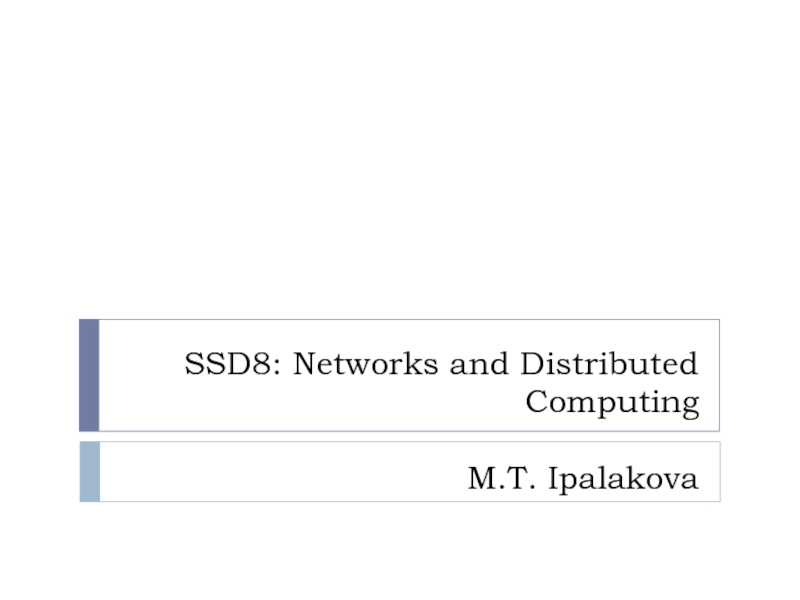

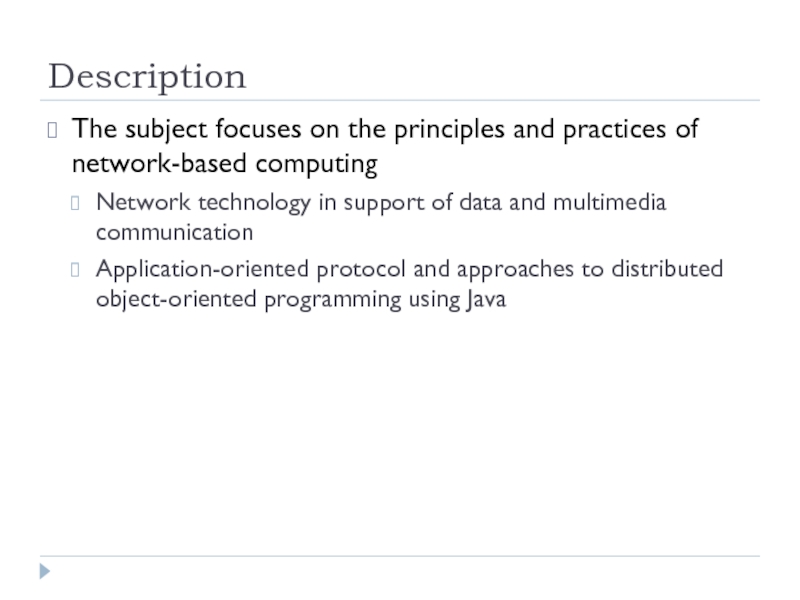
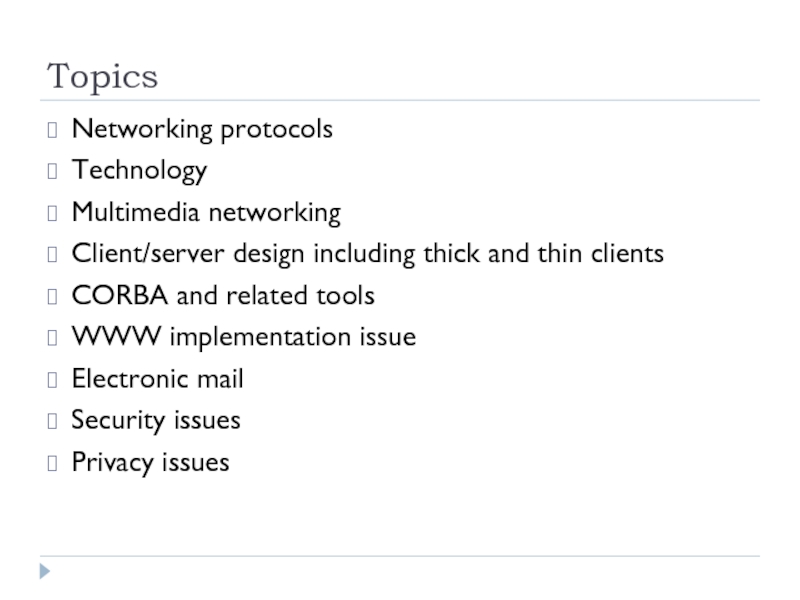
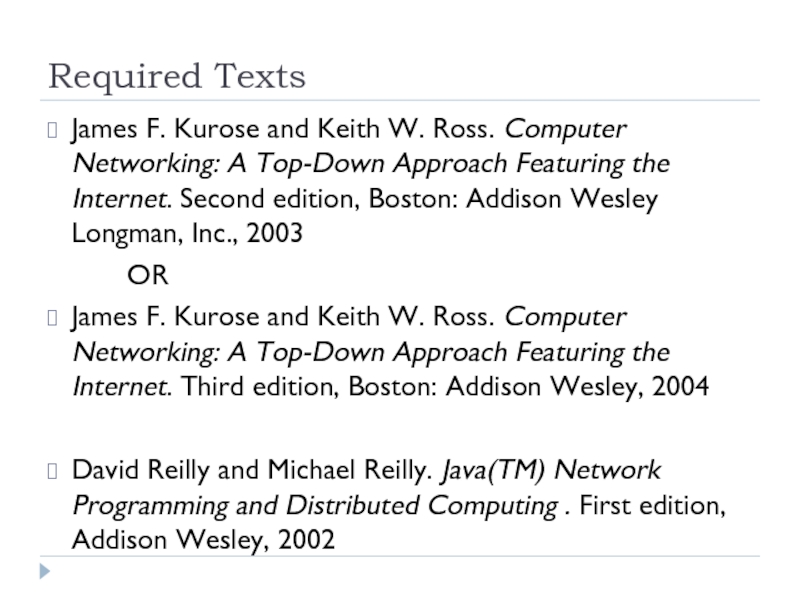
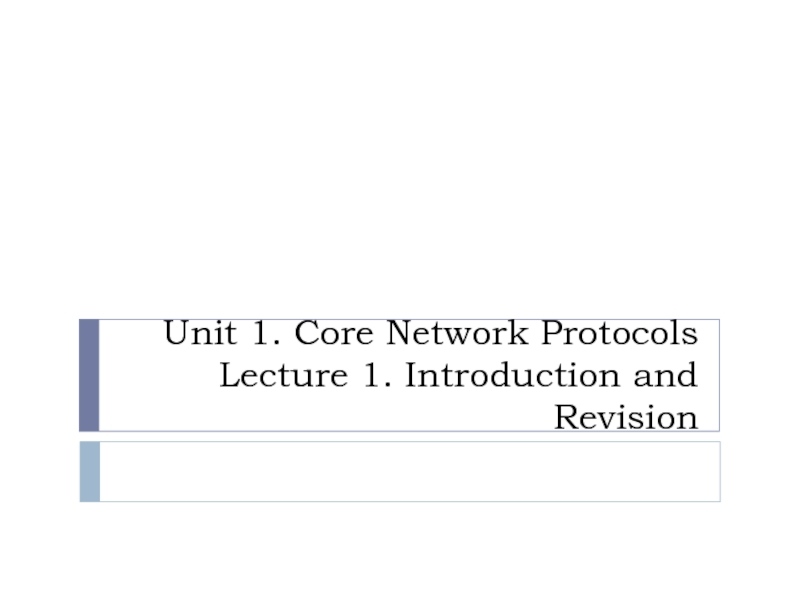
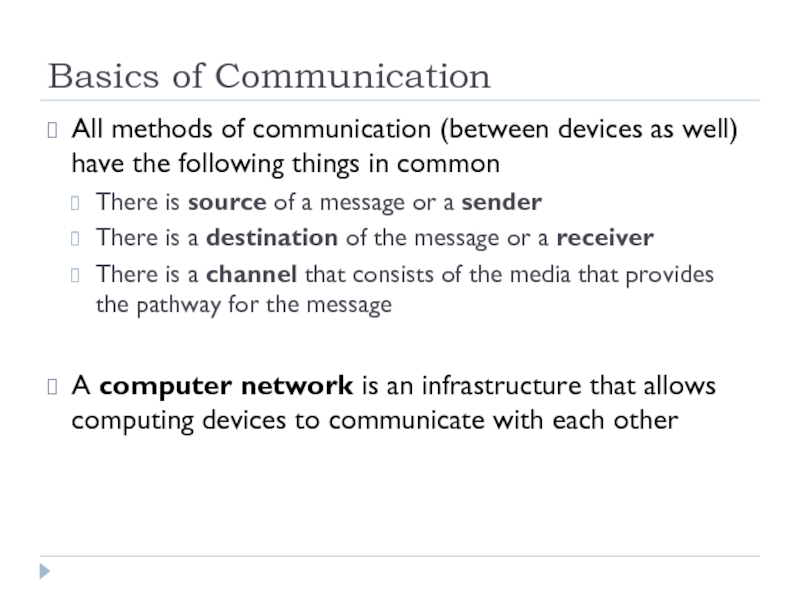
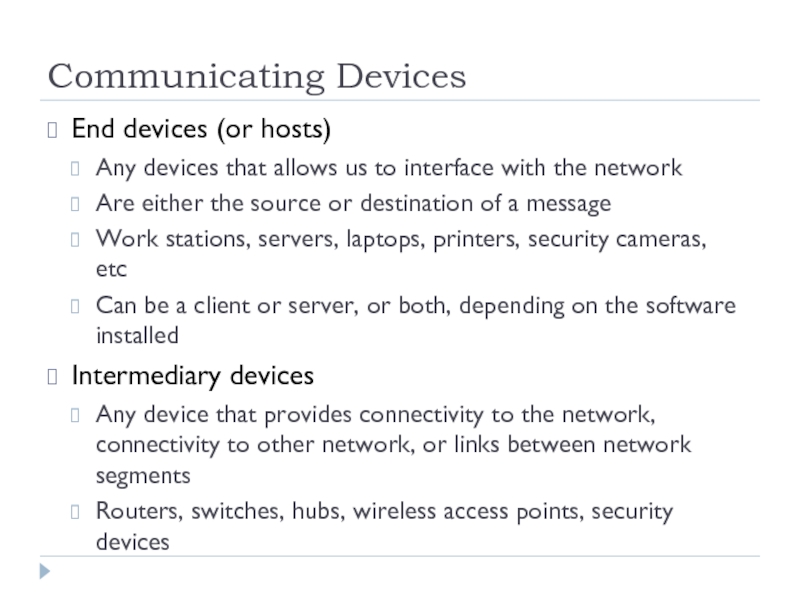
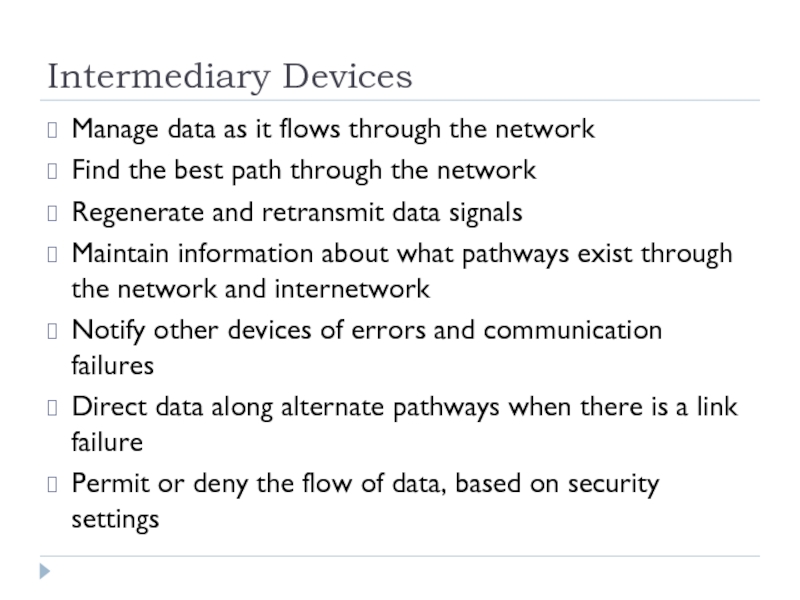
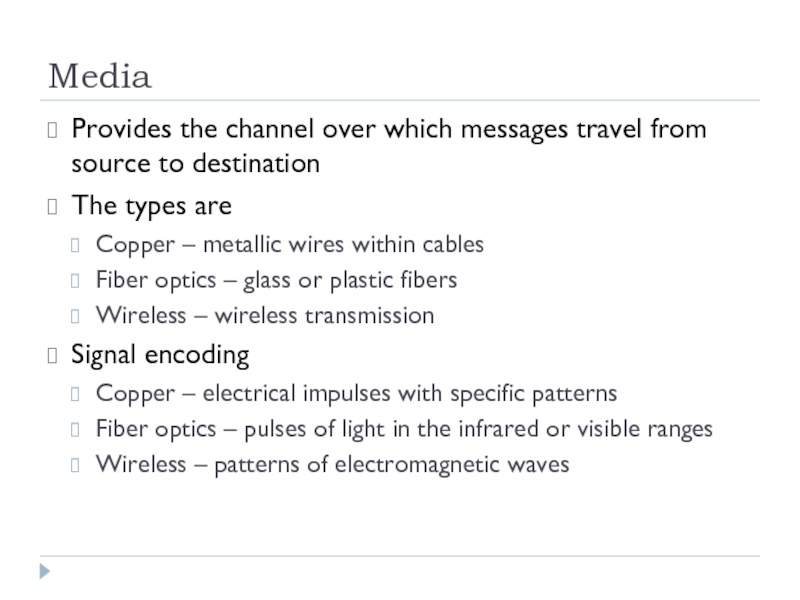
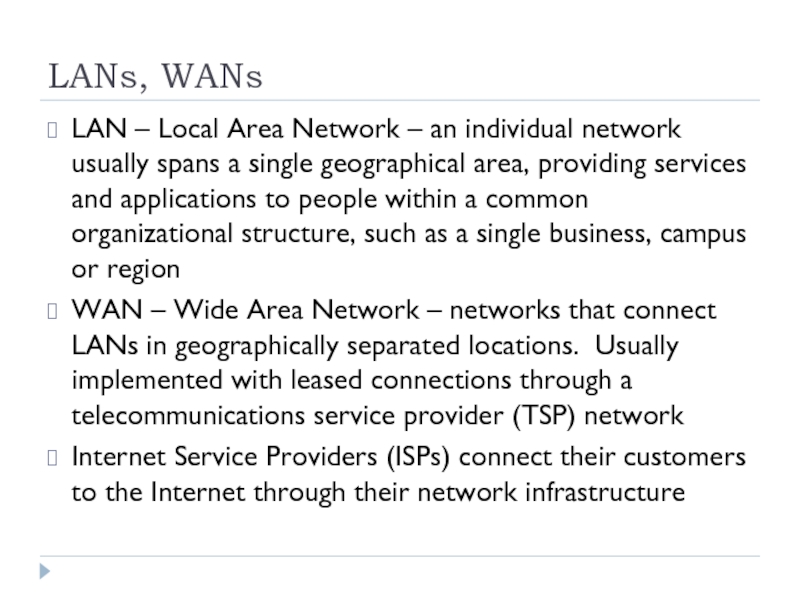

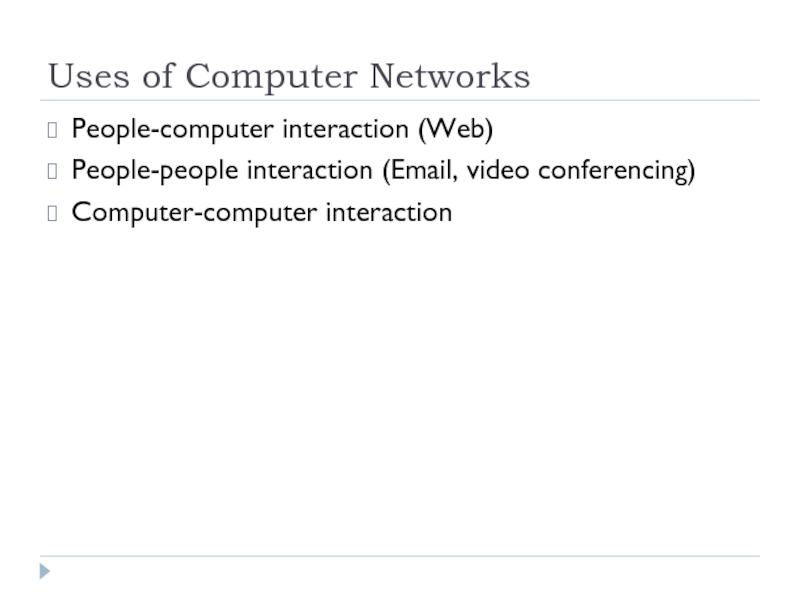
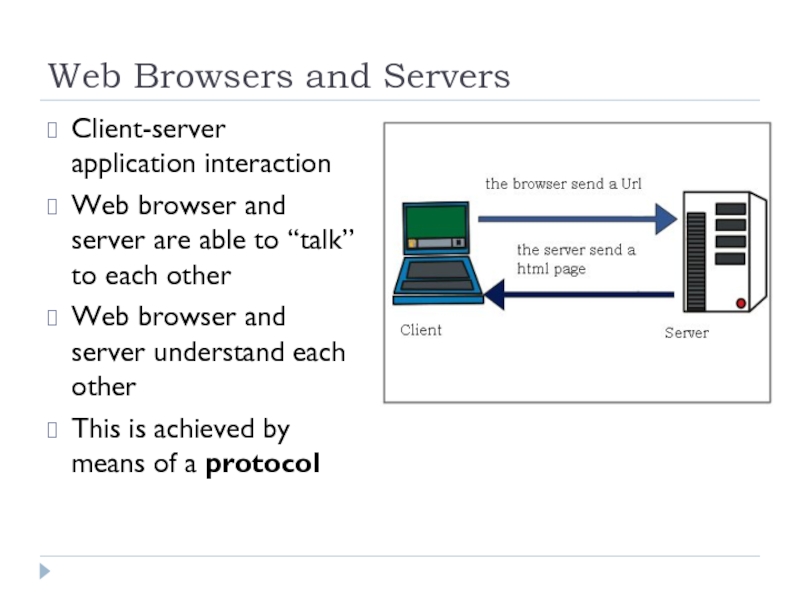
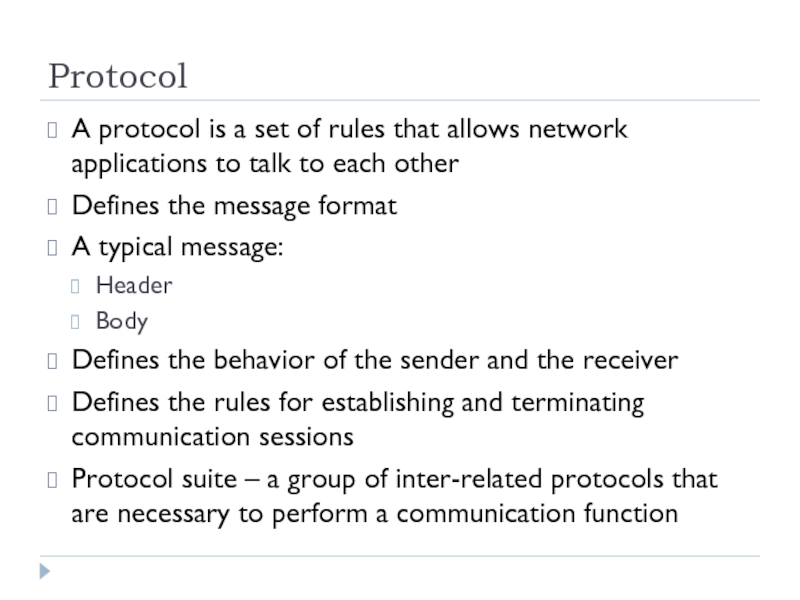
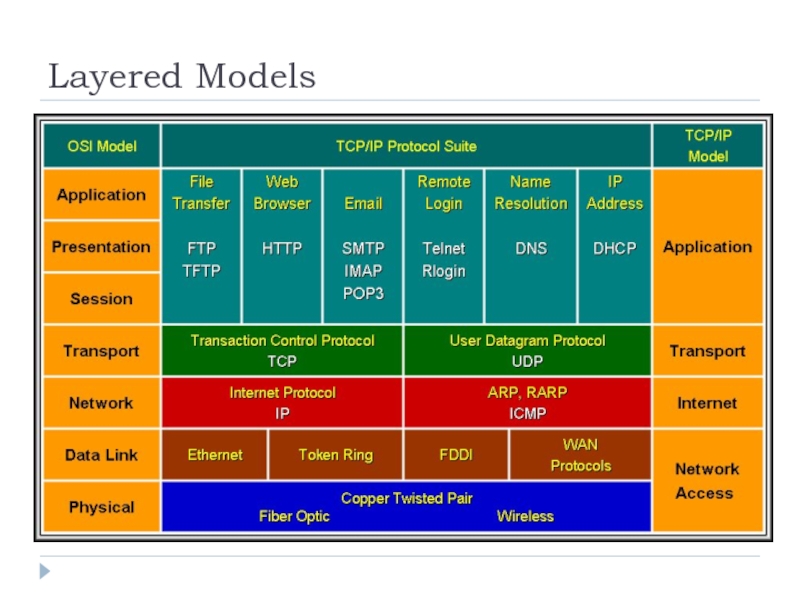

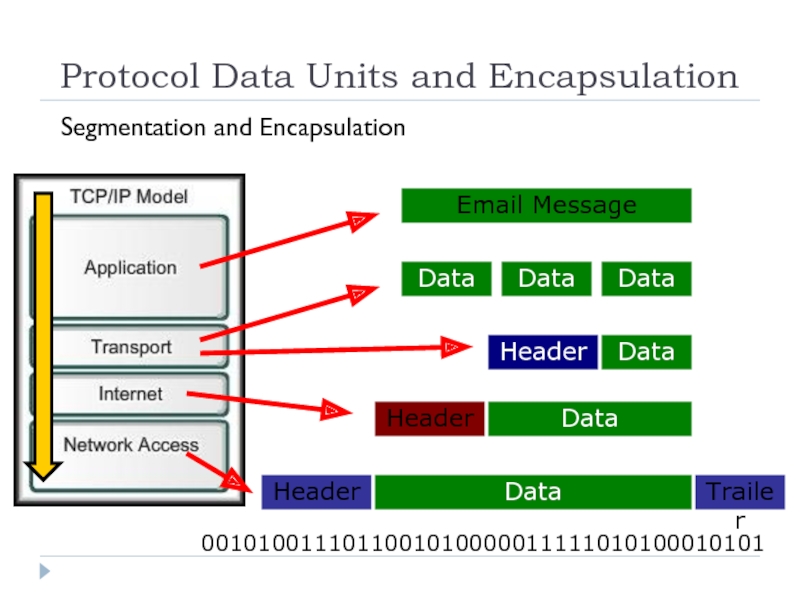


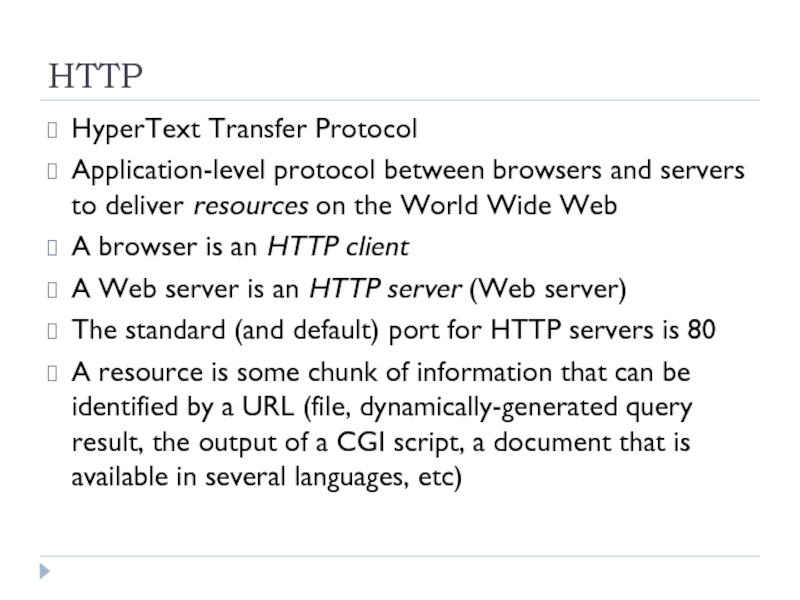
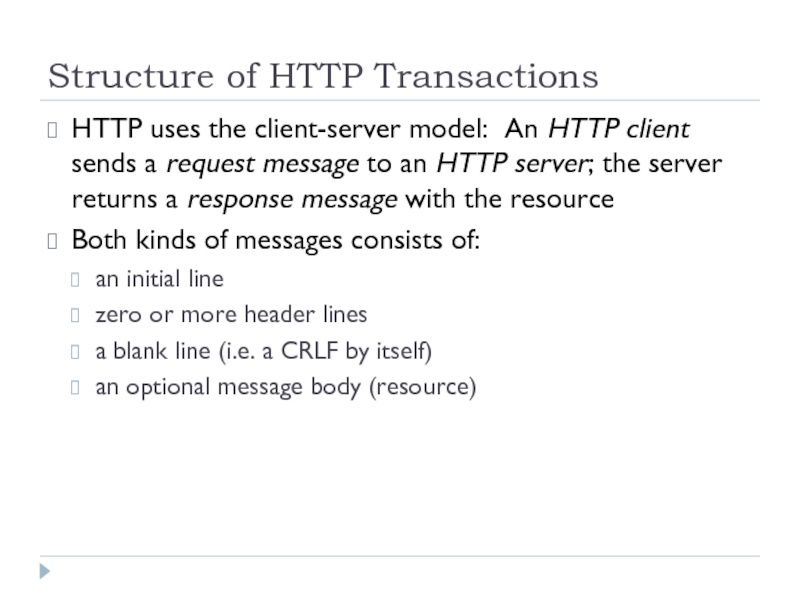
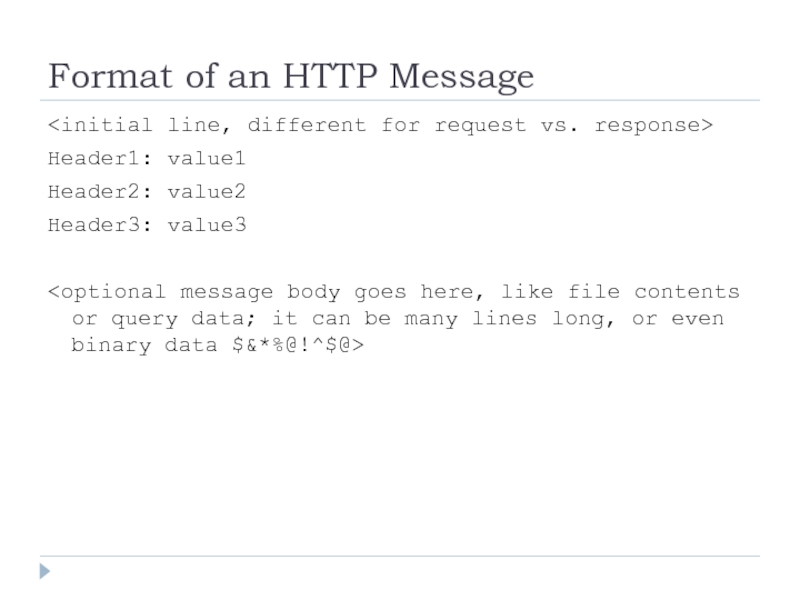
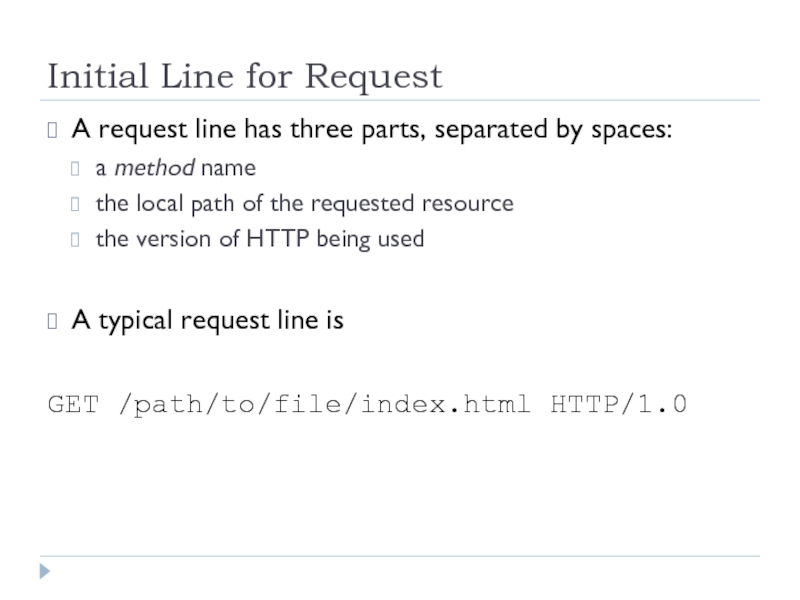

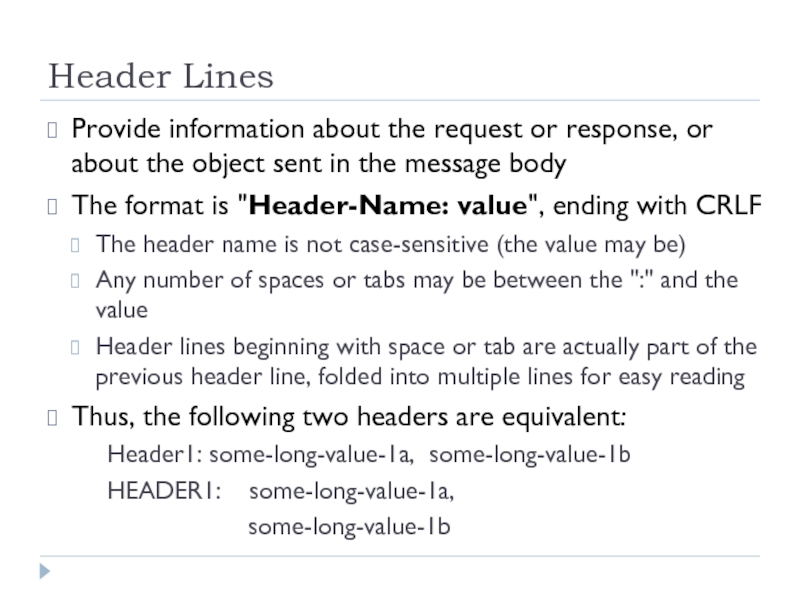
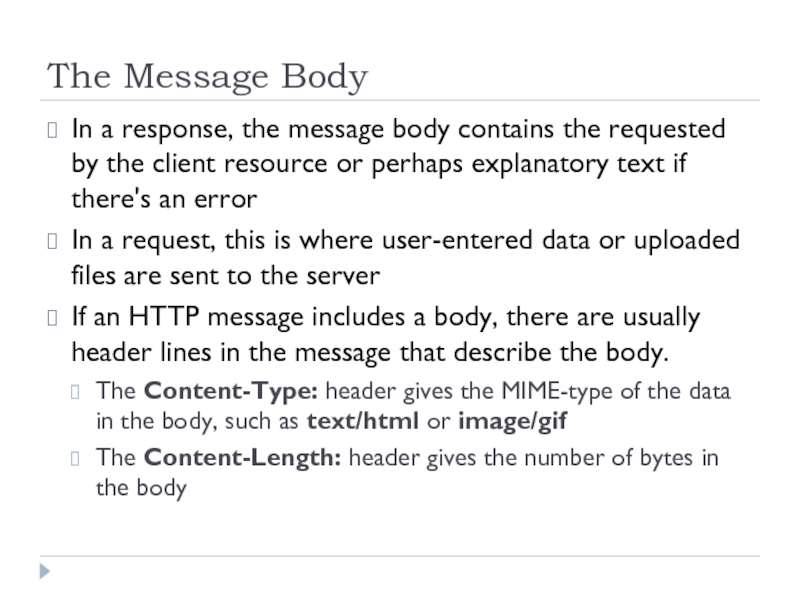
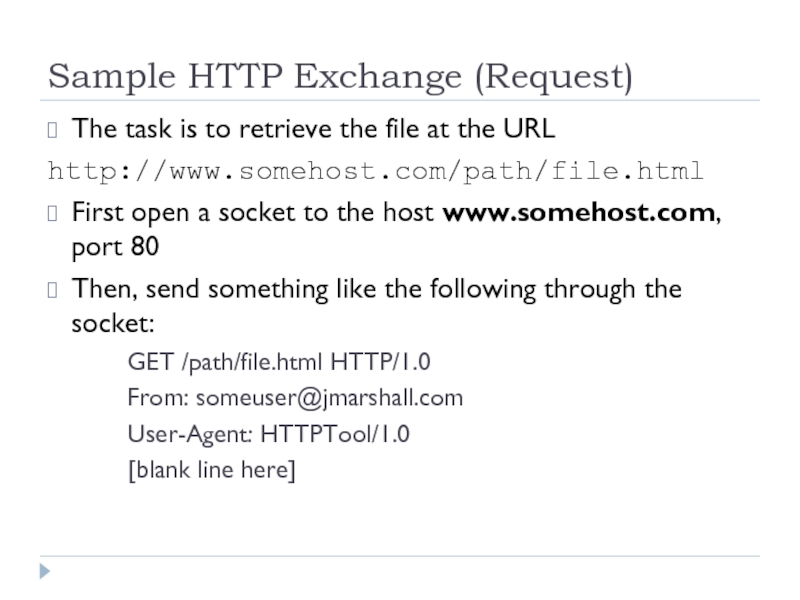

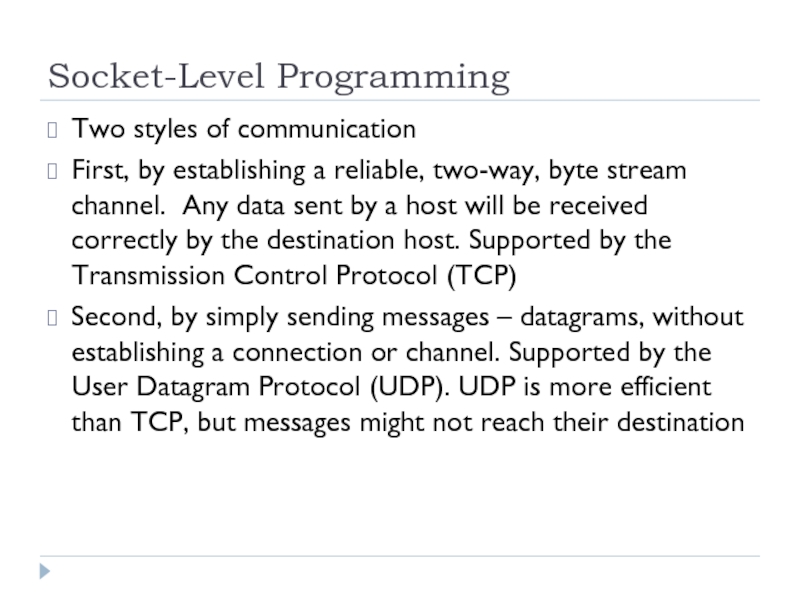
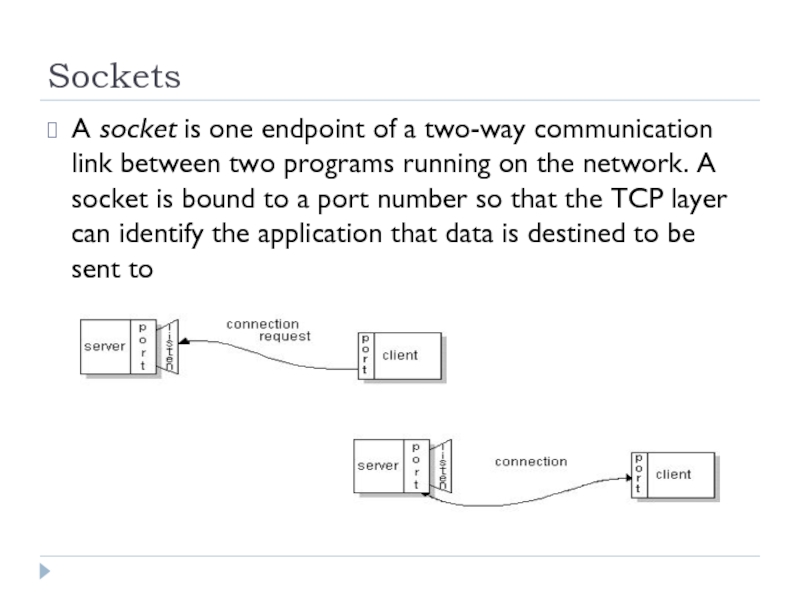

![Sockets – EchoClient Class (1)import java.io.*;import java.net.*; public class EchoClient { public static void main(String[] args) throws](/img/tmb/5/469401/4e9bc5023ae27d18ae7da0664af2a2cb-800x.jpg)
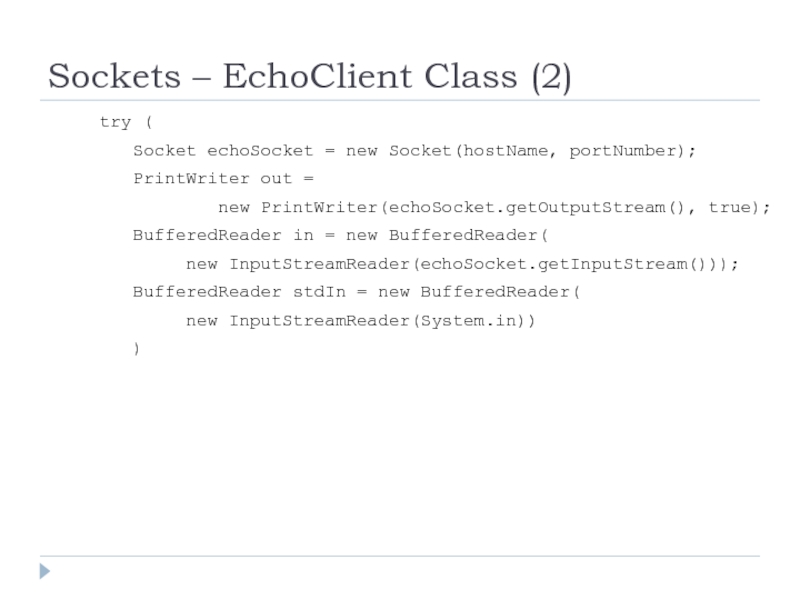
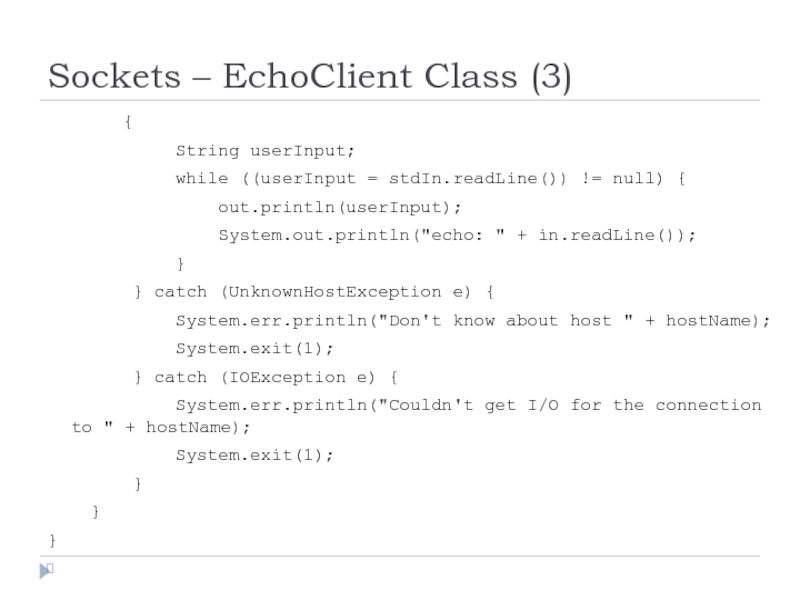
![Sockets – EchoServer (1)import java.net.*;import java.io.*; public class EchoServer { public static void main(String[] args) throws IOException](/img/tmb/5/469401/b337aa6bd9a5f9fd128814dc43e9dc51-800x.jpg)
![Sockets – EchoServer (2) try ( ServerSocket serverSocket = new ServerSocket(Integer.parseInt(args[0])); Socket clientSocket = serverSocket.accept(); PrintWriter out = new PrintWriter(clientSocket.getOutputStream(),](/img/tmb/5/469401/868943dd97d5fc7019227760e7a672c3-800x.jpg)
